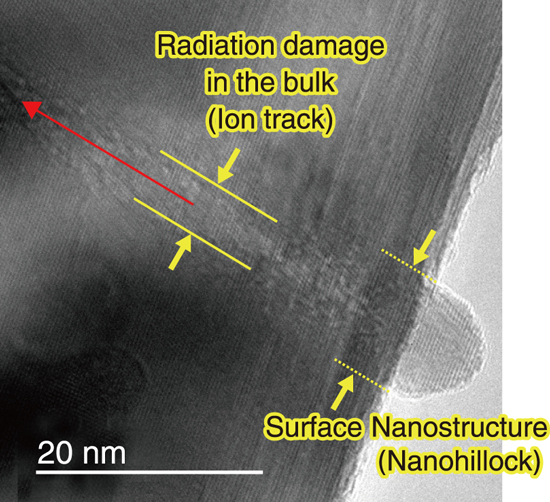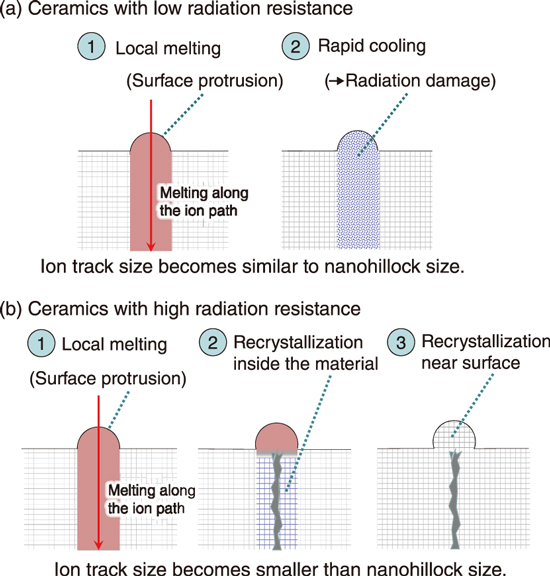
Fig.4-6 Nanostructure created in CeO2 irradiated with a swift heavy ion

Fig.4-7 Nanostructure formation processes by high-energy heavy ions
When ceramics are irradiated with swift heavy ion beams (with energy more than tens of mega electron volts), nanostructures called ion tracks are created along the ion paths. In many ceramics, the size of the ion tracks can be predicted by the conventional theory called the thermal spike theory. However, in some ceramics, the ion tracks observed in experiments were smaller than those predicted by the theory. Surprisingly, such size discrepancy was remarkable in ceramics with high radiation resistance. Why does the theory fail in these cases? Our systematic study of the surface nanostructure (nanohillock) has revealed the reason.
According to our transmission electron microscopy observations (Fig.4-6), the ion track size is smaller than the nanohillock size in CeO2, which is one of the highly radiation-resistant ceramics. In contrast, in ceramics with low radiation resistance, the sizes of the ion tracks and nanohillocks are similar.
The nanostructure formation process in ceramics with low radiation resistance is shown in Fig.4-7(a). First, a part of the surface protrudes during local melting along the ion path, and second, the molten region results in the formation of a damaged region by rapid cooling. This process is likely because the sizes of the nanohillock and ion track are similar in ceramics with low radiation resistance.
In contrast, in ceramics having high radiation resistance (Fig.4-7(b)), a part of the surface protrudes during local melting, and subsequently, the molten region partially recrystallizes. This causes the shrinkage of the damaged region, and finally, the protruded part near surface recrystallizes. This hypothesis can be validated as shown in Fig.4-6. The figure shows that the ion track is smaller than the nanohillock. This means that ion tracks shrink in radiation-resistant ceramics owing to the extremely fast recrystallization. The result strongly indicates that the recrystallization process was not assumed in the conventional theory. The well-aligned atomic layers inside nanohillocks further support the recrystallization process depicted in the third process in Fig.4-7(b).
In conclusion, the origin of high radiation resistance is the high recrystallization capability. By maximizing the recrystallization capability, a much higher radiation resistance can be achieved.
This work was supported by JSPS KAKENHI Grant-in-Aid for Scientific Research (C) (JP20K05389), “Clarification of Radiation Damage Mechanism by Surface Nanostructure Observation of Radiation-Resistant Ceramics“.
(Norito Ishikawa)